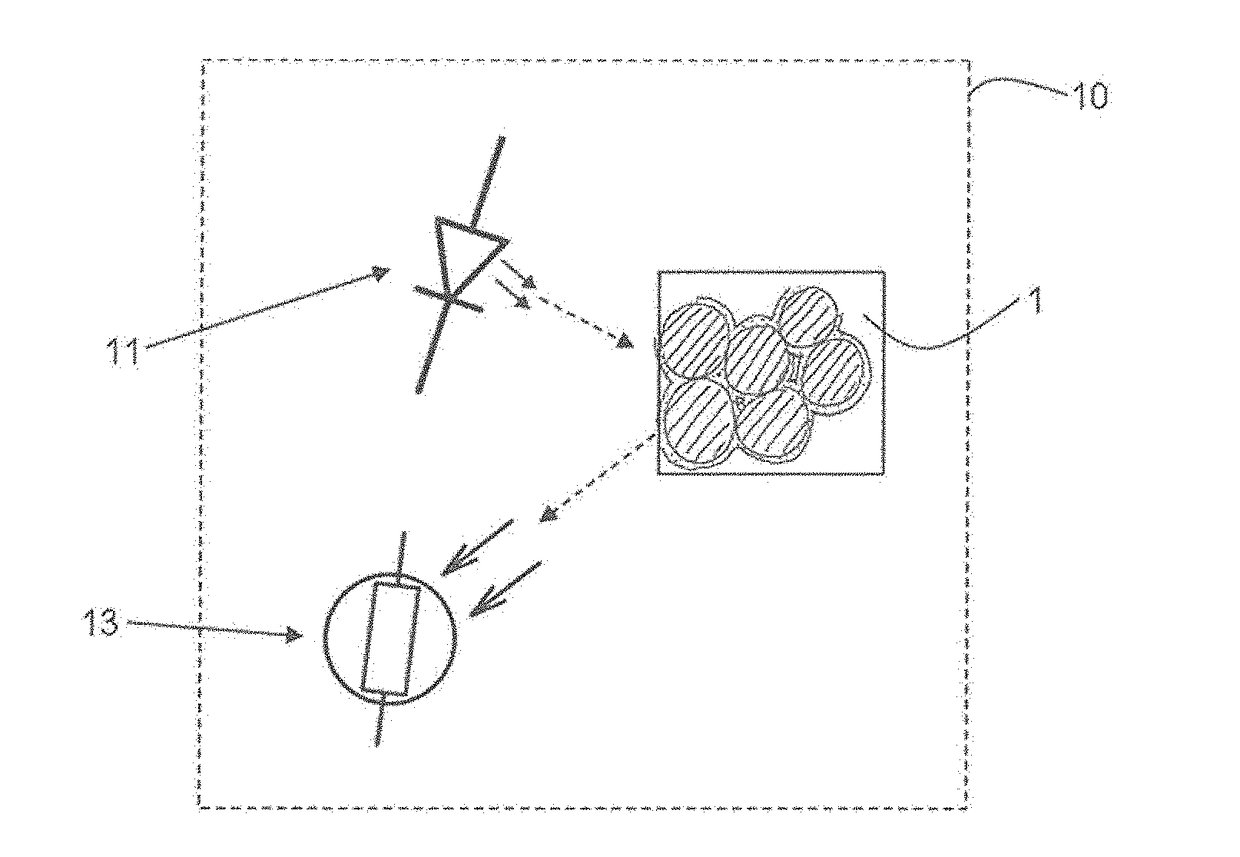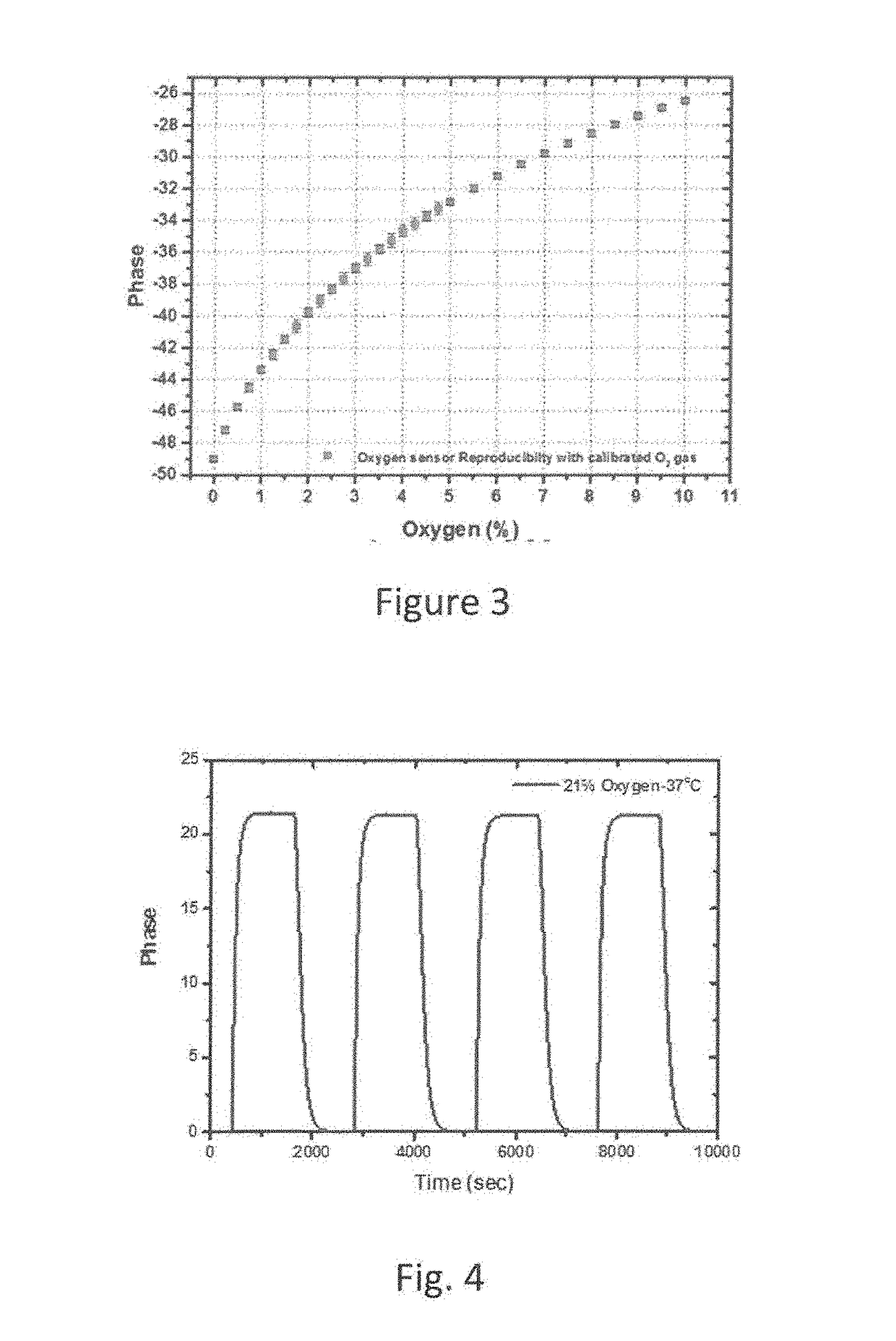Optical sensor for detecting a chemical species
a chemical species and optical sensor technology, applied in the field of optical sensors, can solve the problems of limited response time and/or the strength of colour/fluorescent response of prior art sensors, degrade very fast, and use of gas detection, etc., to achieve good compromise between amount of dye present and response time, the effect of improving the response time of a hierarchical optical sensing layer
- Summary
- Abstract
- Description
- Claims
- Application Information
AI Technical Summary
Benefits of technology
Problems solved by technology
Method used
Image
Examples
Embodiment Construction
[0046]FIG. 1 shows schematically a close-up view of the structure of an optical sensing layer 1 according to the invention. Sensing layer 1 comprises a substrate 3, which may be glass, plastic, ceramic, metal or any other convenient material, upon which is deposited a mesoporous matrix 5. A mesoporous material is defined as a material with pore diameter between 2 and 50 nm between individual, substantially non-porous particles of material. A typical mesoporous matrix 5 for this application is formed by metal oxide layers obtained by deposition of nanoparticles from solution, and is deposited on the substrate 3, which is typically flat although this does not have to be the case. The thickness of these layers is typically comprised between about 1 and about 50 μm, and the size and density of the mesoporous particles are chosen to preferably achieve a pore size in the range of 10-50 nm. The mesoporous matrix 5 thus provides a vastly-increased surface area compared to a flat surface, an...
PUM
| Property | Measurement | Unit |
|---|---|---|
| pore diameters | aaaaa | aaaaa |
| pore diameters | aaaaa | aaaaa |
| pore diameters | aaaaa | aaaaa |
Abstract
Description
Claims
Application Information
 Login to View More
Login to View More - R&D
- Intellectual Property
- Life Sciences
- Materials
- Tech Scout
- Unparalleled Data Quality
- Higher Quality Content
- 60% Fewer Hallucinations
Browse by: Latest US Patents, China's latest patents, Technical Efficacy Thesaurus, Application Domain, Technology Topic, Popular Technical Reports.
© 2025 PatSnap. All rights reserved.Legal|Privacy policy|Modern Slavery Act Transparency Statement|Sitemap|About US| Contact US: help@patsnap.com



